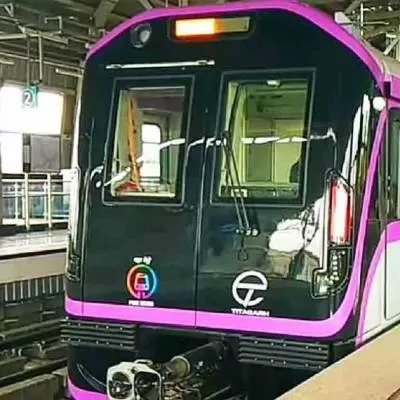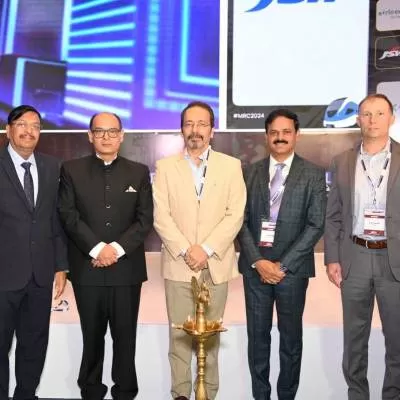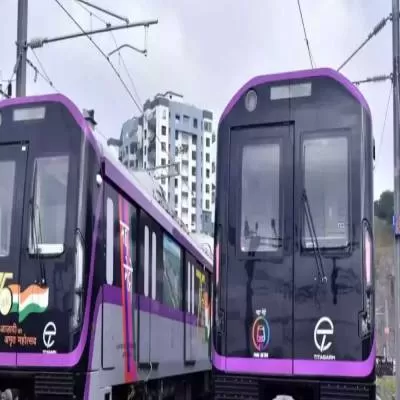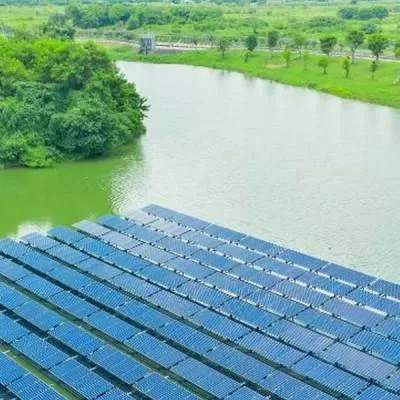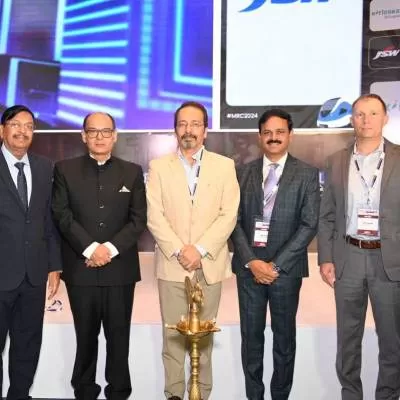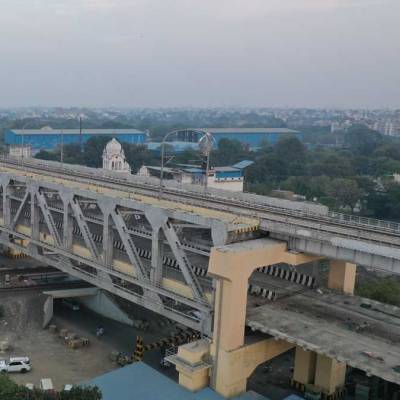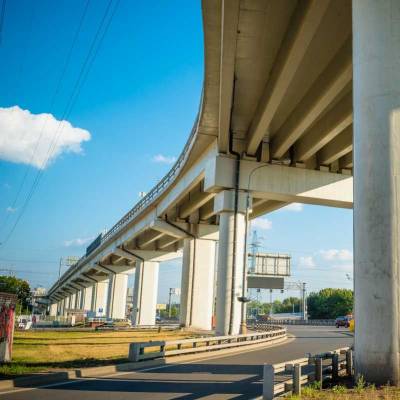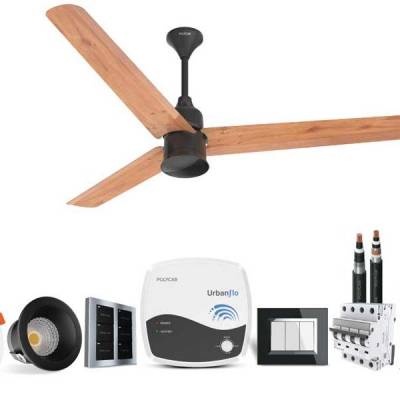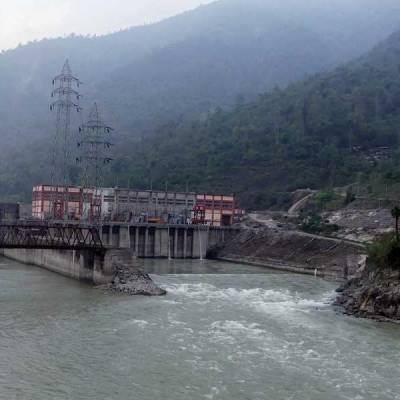- Home
- Infrastructure Energy
- POWER & RENEWABLE ENERGY
- 5D to 6D BIM!
5D to 6D BIM!
Read full article
CW Gold Benefits
- Weekly Industry Updates
- Industry Feature Stories
- Premium Newsletter Access
- Building Material Prices (weekly) + trends/analysis
- Best Stories from our sister publications - Indian Cement Review, Equipment India, Infrastructure Today
- Sector focused Research Reports
- Sector Wise Updates (infrastructure, cement, equipment & construction) + trend analysis
- Exclusive text & video interviews
- Digital Delivery
- Financial Data for publically listed companies + Analysis
- Preconceptual Projects in the pipeline PAN India
How Maha Metro took a quantum technological leap in project management from 5D BIM to 6D BIM... On January 28 this year, when 11.5 km of the Nagpur Metro Aqua Line was thrown open to the public, it was one of the fastest constructions of a metro-rail project. In little less than a span of five years, Maharashtra Metro Rail Corporation (Maha Metro), had started passenger services on about 25 km of the total project length of 38 km. Earlier, Maha Metro had inaugurated passenger services on the Orange Line between its two stations of Sitabuldi Interchange and Khapri Metro Station. Although Nagpur Metro was sanctioned and the foundation stone for the same was laid by Prime Minister Narendra Modi on August 21, 2014, actual construction commenced only on June 1, 2015. The daunting task Nagpur Metro is a Rs.86.80-billion project comprising two corridors, 38.215 km in length, with 1,250 piers, 38 stations and two depots. The project has a tight completion timeframe. In addition, Maha Metro has also been entrusted the responsibility of constructing the Rs.110-million Pune Metro project with two corridors, 31.254-km-long with 30 stations and two depots. Although the Pune project is shorter in length than that of Nagpur, it is more complex owing to a 5-km underground section passing through difficult urban landscape. The 69.5-km of metro-rail being constructed in two cities makes it the largest project being constructed by one metro rail corporation in the country outside Delhi and Mumbai. Additionally, in both cities, Maha Metro is constructing an unprecedented level of office complexes, retail space, recreational spaces and other real-estate development to ensure that its non-fare box revenue is 60 per cent of the total revenue. Even without the addition of a likely Phase-2 of the Nagpur and Pune metros and more responsibilities to be added to Maha Metro in the near future, the present task at hand is daunting – obstacles and challenges have to be negotiated, time conserved and money saved. Quite clearly, Maha Metro has its task cut out, tightly controlling delivery timelines, curbing and eliminating cost overruns, effecting a saving over the estimated cost, all while adhering to consistent quality output. The success mantra: 5D BIM Maha Metro is the first organisation in the country to implement 5D BIM project visualisation. For the uninitiated, 5D BIM is a digital project management concept that integrates many software seamlessly and employs five-dimensional building information modelling (BIM) to accurately predict outcomes and timelines. This unique system has enabled Maha Metro to very tightly control quality, cost and time. Nagpur shows the way During the construction of the Nagpur Metro, Maha Metro, by using 5D BIM, has achieved construction excellence, first converting future physical works into a prior virtual reality and then re-transporting it to the reality of the physical work. Such an amalgamation of convergence of physical and virtual reality in project management is unprecedented in the country, either in government or the corporate sector. In a country where large infrastructure projects have gained notoriety for time and cost overruns and have often delivered dubious quality, using the new 5D project management platform, Nagpur Metro has broken from the traditional vicious circle of project management and delivered consistent quality along with timebound completion. Further, while doing so, it has effected a saving of 10 per cent over the estimated cost as provided in the DPR. Maha Metro has already geared up to replicate the 5D BIM benefits in the Pune Metro project as well. Marching ahead to 6D The success achieved with 5D BIM indubitably has no parallel and peer in the country. But Maha Metro has just upped the ante. After successfully implementing 5D BIM, it is now exploring the 6D BIM mechanism – 6D BIM refers to the intelligent linking of individual 3D components or assemblies with all aspects of project life-cycle management information. It is expected that taking the life-cycle approach of 6D BIM over the next 25 years, Maha Metro will save about Rs.25 billion ( Rs.14.50 billion in the Nagpur Metro itself). Why 6D? The typical life-cycle of a metro project is for 50 years, which includes four to five years on design and construction and 40-45 years on operations and maintenance (O&M). If one considers the complete life-cycle cost of the project, 20 per cent is typically the construction cost while the majority 80 per cent is spent on O&M. Shifting to a 6D platform means that, during the construction phase itself, Maha Metro will capture all the assets in granular details on the digital platform; thus, the minutest information on them will be available at the click of a mouse during the O&M stage. While the Maha Metro has embraced construction excellence with 5D, 6D becomes a digital twin that provides an online, real-time asset management system. 6D makes post-construction handover seamless An adjunct benefit of shifting to the 6D digital platform is that the handover of Maha Metro projects will become seamless and substantially reduce information loss, even eliminating it, at the time of the handover. Needless to say, handing over of completed assets in a complex metro project after construction to the O&M team, often within a short span of time, is a humungous task. But the new digital platform makes this handover seamless with final deliverables being 3D ‘as-built’ models rather than drawings, based on which the O&M team can plan the maintenance strategy and philosophy in advance with ease. The Asset Tag advantage What’s more, to maintain asset information, Maha Metro has developed a unique Asset Tag, where 3D component information is linked, such as product details, O&M manuals, product specifications, etc. The same Asset Tag is used to identify assets and perform maintenance activities. With the total number of assets estimated at over 500,000 this is another innovative subcomponent of the digital platform, covering rolling stock, MEP, signalling, telecom, OHE, power supply, viaduct, stations, etc. Maha Metro did not invent the 5D or 6D BIM versions. Infrastructure projects globally are using them. But what separates Maha Metro from even its global peers is the comprehensive manner in which it has been able to harness the full benefit of 5D in construction, and the way it is perfecting 6D for use in the O&M phase. To share your views, write in at feedback@ConstructionWorld.in


